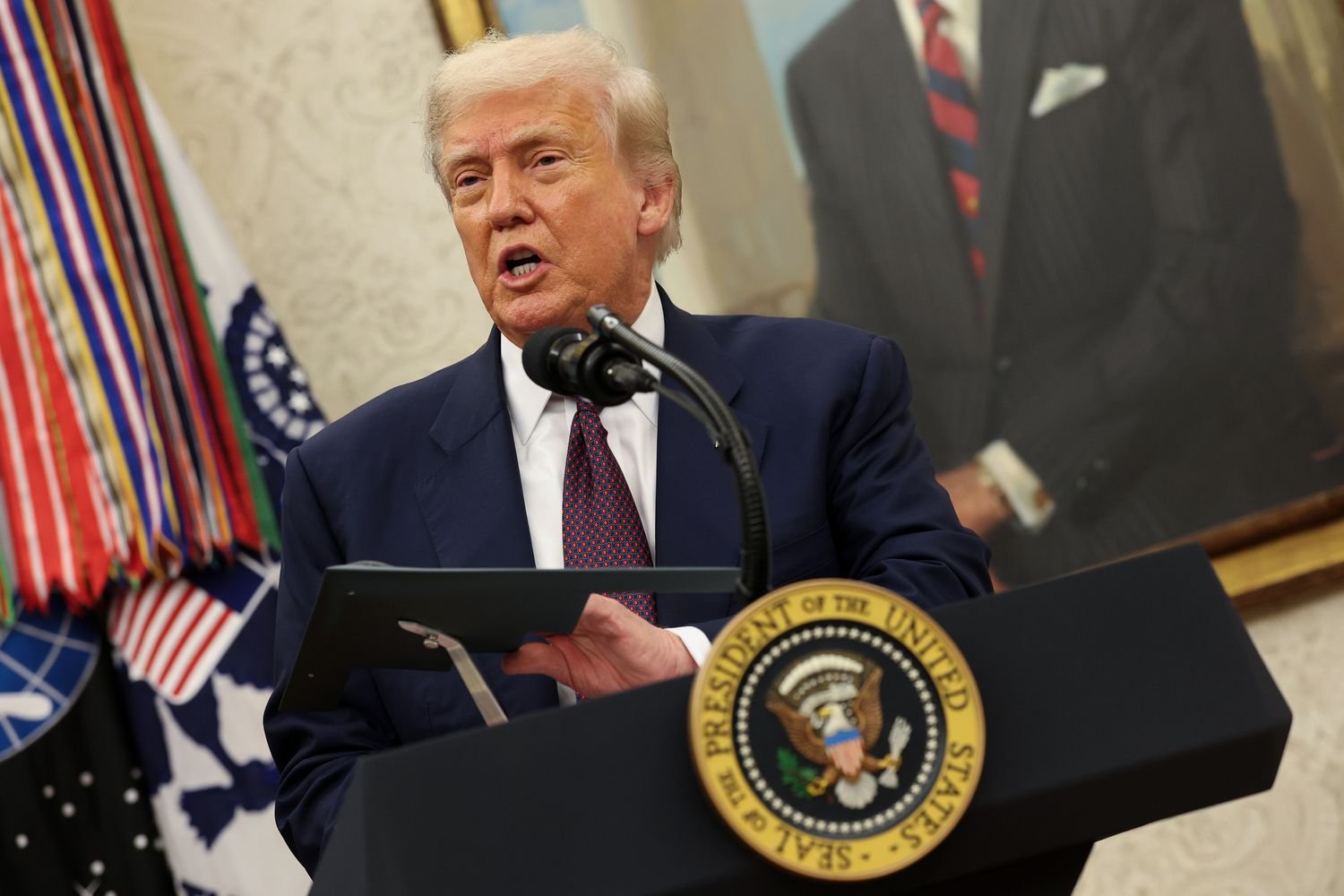:max_bytes(150000):strip_icc():format(jpeg)/GettyImages-2228842126-82beb4ffa45d4edf9edd67de1f260e67.jpg)
Key Takeaways
- President Trump said Wednesday he plans to impose a 100% tariff on chip imports, with some exceptions for companies that have made commitments to manufacturing in the U.S.
- Trump pointed to Apple as an example, shortly after the iPhone maker announced a $100 billion investment in U.S. production.
- Apple’s pledge follows months of pressure from Trump to move more of its operations stateside.
President Trump said Wednesday he plans to impose a 100% tariff on chip imports, with some exceptions for companies that have made commitments to manufacturing in the U.S.
“We’ll be putting a tariff of approximately 100% on chips and semiconductors, but If you’re building in the United States of America, there’s no charge,” Trump said.
The comments came shortly after Apple (AAPL) CEO Tim Cook joined Trump at the White House to announce a $100 billion investment in U.S. manufacturing, and Trump pointed to Apple as an example of a company that would avoid the new tariffs.
“The good news for companies like Apple is if you’re building in the United States or have committed to build—without question committed to build in the United States, there will be no charge,” Trump said.
Shares of Apple surged about 5% during Wednesday’s regular session ahead of the announcement, and were up another 3% in after-hours trading.
While Apple’s latest pledge doesn’t promise full-fledged production of flagship products like the iPhone in the U.S., it does expand the number of components Apple makes domestically, and follows months of pressure from Trump to move more production stateside.
The reprieve could represent one win for Apple, after a series of tariff-related challenges. The iPhone maker said last week it expects tariffs could cost the company $1.1 billion this quarter, assuming no changes in tariff levels, after it absorbed $800 million in tariff costs the quarter prior.
Earlier Wednesday, Trump also said the U.S. will look impose an additional 25% tax on imports from India, where Apple has a large presence, after shifting some of its production from China to India.
Source link
